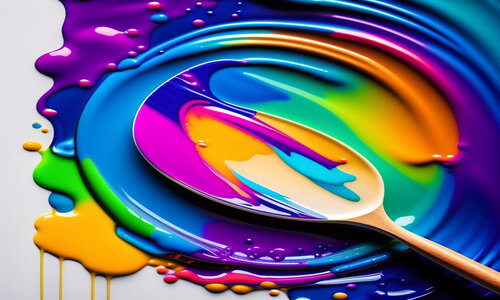Build Your Own Graphic Design PC

Building your very own PC designed for graphic design can be very satisfying because of how you can individually make it address the specific needs of creative-related software This guide is going to help you choose the right parts for your build, make sure that they’re compatible, and maximize the potential for your system to perform.
Knowing What You Really Need as a Graphic Designer
Before embarking on hardware selection, one needs to know the needs of graphic design work. Very resource-needy utilities are Adobe Photoshop, Adobe Illustrator, and Adobe InDesign. Therefore, PC should be resourceful enough in processing, memory, and graphics to be sure to cope with the complicated work of editing and rendering high-resolution images.
Selecting the Right Hardware
1. Central Processing Unit (CPU)
The CPU represents the brain of the computer. Regarding graphic design, a multi-core processor must be one of the best features in the category, since most designing apps really do well with many cores.
Recommended Choices:
AMD Ryzen 7 or 9 series
Intel Core i7 or i9 series
These provide brilliant performance in a multithreaded scenario and easily glide through resource-intensive applications.
2. Graphics Processing Unit (GPU)
A powerful GPU is essential in a graphic designer’s career with 3D modeling or video editing. In these regards, a dedicated GPU will come with advantages like lowered rendering times and boosted performance in design applications.
Suggested Options:
NVIDIA GeForce RTX series, such as RTX 3060, RTX 3070
AMD Radeon RX series, such as RX 6700 XT
These GPUs have sufficient VRAM and support for the latest features, like ray tracing, which can be of help in some design processes.
3. Memory (RAM)
Enough RAM is required for smooth running with very large files and also those that involve multitasking between different applications.
Recommended Quantity:
At least 16GB; consider 32GB if working with very large files or if multitasking between different applications.
4. Storage
The fastest storage solutions improve performance and speed. There are two main types of storage.
Solid State Drives (SSD): SSDs have a much faster read/write speed in comparison to traditional hard drives.
Hard Disk Drives (HDD): Although they work at a much slower speed than the SSDs, they have greater space at a much cheaper costing.
For best performance:
SSD as the primary drive containing an operating system and software (minimum 500GB).
HDD to keep projects and files (1TB or more).
5. Motherboard
The motherboard is a crucial interface that integrates all components within your PC. While selecting a motherboard:
Ensure it is compatible with your chosen CPU.
Look at features like having sufficient RAM slots, PCIe slots for your GPUs, and USB ports for peripherals.
6. Power Supply Unit (PSU)
A quality PSU ensures that all your components receive the required power without the risk of them getting fried.
Select PSUs from reputable brands with, at the very minimum, a certification level of 80 Plus Bronze.
Calculate the total wattage your components will consume; usually, a range between 650W to 850W is considerable.
7. Cooling System
An effective cooling system is necessary to ensure the performance doesn’t degrade under heavy loads.
If considering over-clocking the CPU, the recommendation is the aftermarket air coolers or liquid coolers.
Select the fans in such a way that they are easily aligned along with your build, thereby easy flow of air through the case.
Pick a chassis that accommodates all selected components and has a good airflow
If you chose a size of a motherboard of ATX or around, then see that the casing can support the ATX motherboards. Then, check if there is ample room for cooling solutions, in case you wish to add more of those.
Checking Compatibility
After choosing all the components, ensure that they are all compatible:
Ensure motherboard supports type of CPU socket.
RAM compatibility- Speed and Type(DDR4/DDR5).
• Check the wattage and connectors on the PSU to all components.
• Check if the GPU fits in the case properly.
Step-By-Step Assembly
The assembly of your PC takes the following steps:
• Carefully install the CPU in the motherboard.
• Install the RAM modules in the memory slots.
• Install/mount the motherboard to the case.
• Install the storage drives-install the SSDs first then the HDDs
• Install the GPU in the motherboard’s PCIe slot.
Power cables from the PSU to the motherboard, GPU, and all drives
Finally, connect any additional cooling fans or RGB lighting of your preference.
Testing Your Build After assembly:
Power up your PC and ensure everything boots up fine.
Access the BIOS settings to verify components being recognized. Change the speed of any fans if necessary.
Install appropriate operating systems, whether Windows or Linux, and all the respective drivers before loading the graphic design applications.
places to purchase the parts
Now that you have chosen your parts, it is now up to you to acquire them.
There exist several methods for that:
Online Retail Stores
People normally use Amazon, hw-egypt and Micro Center to buy all types of computer components. In most cases, they provide you with a large number of varieties, often the competitive price is found here. It is simple to read customers’ reviews and compare prices. Look for bundled offers or deals that will help you save.
Local Computer Stores
Computer stores are knowledgeable and often can help you find the right parts to put together your system. In addition, they offer the convenience of saving you time and shipping costs if you purchase local.
Hardware store discounts
Most hardware stores hold seasonal sales or clearance events. They make good choices since they allow one to get the components at a huge discount. Search for when sales or promotions for PC parts are on, especially during holidays or back-to-school seasons.
Optimizing Peak Performance
In order for you to have a better experience with your custom-built computer, make sure you do the following:
Keep the Drivers Updated
Keeps the GPU software up to date so that one can enjoy the latest performance enhancement features.
Provide an Ample Storage Space
Store your OS and applications frequently run on the SSD, and store the large files on the HDD; this way, it will optimize loading and storing respectively.
Caring for Cooling
You can add more case fans, if required, to keep a proper temperature. You should always check the temperature status of your system through proper software tools to prevent it from getting hot.
AT The End
Building a computer for graphic design from compatible parts and understanding their roles, through careful selection, could allow you to build a powerful machine meeting creative need. Investing in the right hardware—from the CPU and GPU down to the RAM and storage—can assure smooth workflows and improvement in productivity.
You can do that in your budget, online stores, or by visiting the stores in-person. Just make sure that the parts are compatible with each other by doing a bit of research. Have fun building it and make your graphic design project an efficient and enjoyable process.
Happy building!

